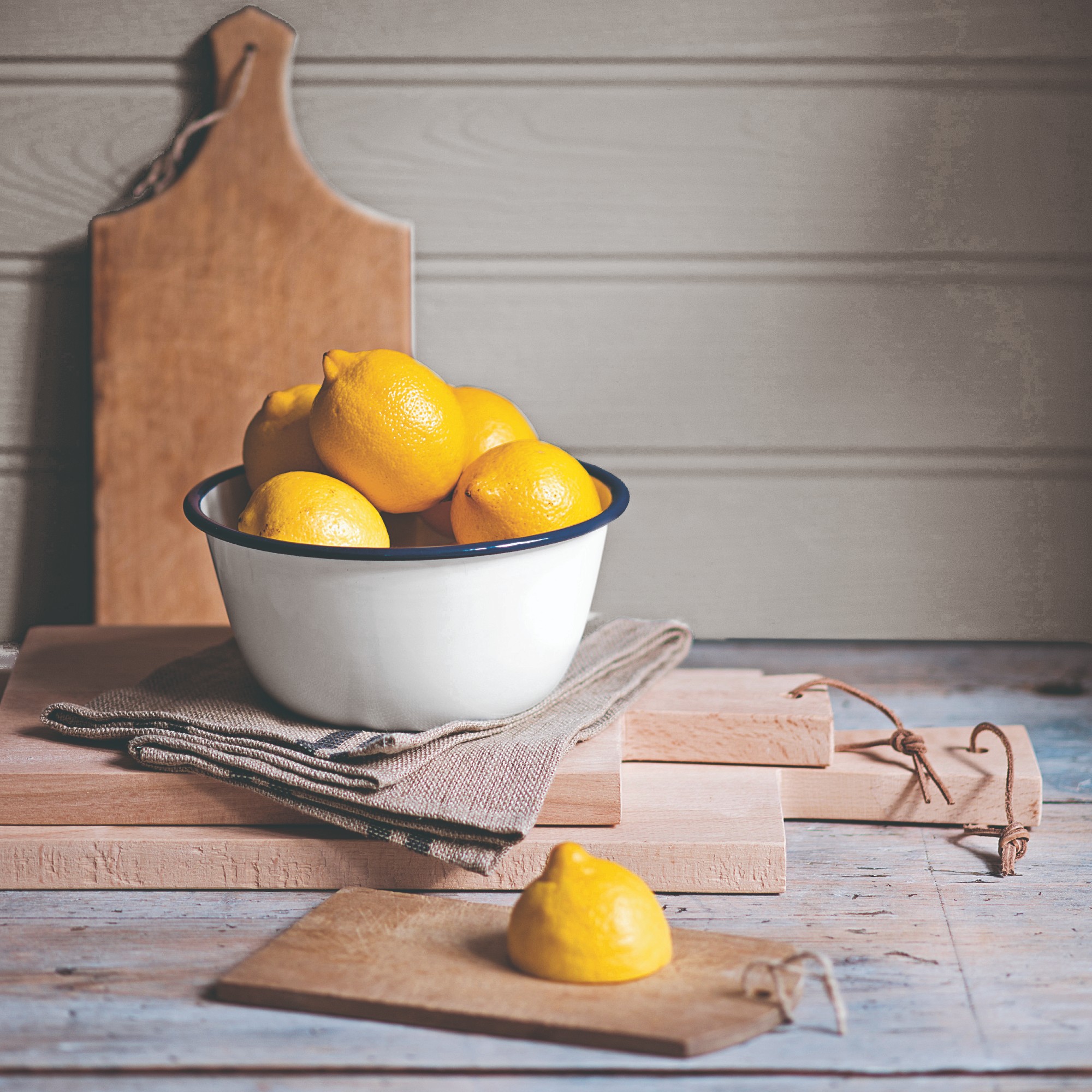
As beautiful and rustic as they look, cleaning wooden cutting boards is anything but straightforward. Favoured for their natural origin and look, they are problematic to deal with due to their grain, which is why they are never used in commercial kitchens. But it turns out that how to clean a wooden cutting board is fairly simple and requires items from your kitchen cupboard.
And they’re all natural on top of that. We love a natural cleaning hack around here after all. If you think about it, it only makes sense that a natural material like wood should be cared for with natural ingredients.
So these are the four au naturel items to not only clean but also refresh your best chopping board with and bring it to its former glory, according to cleaning experts.
How to clean and refresh a wooden cutting board
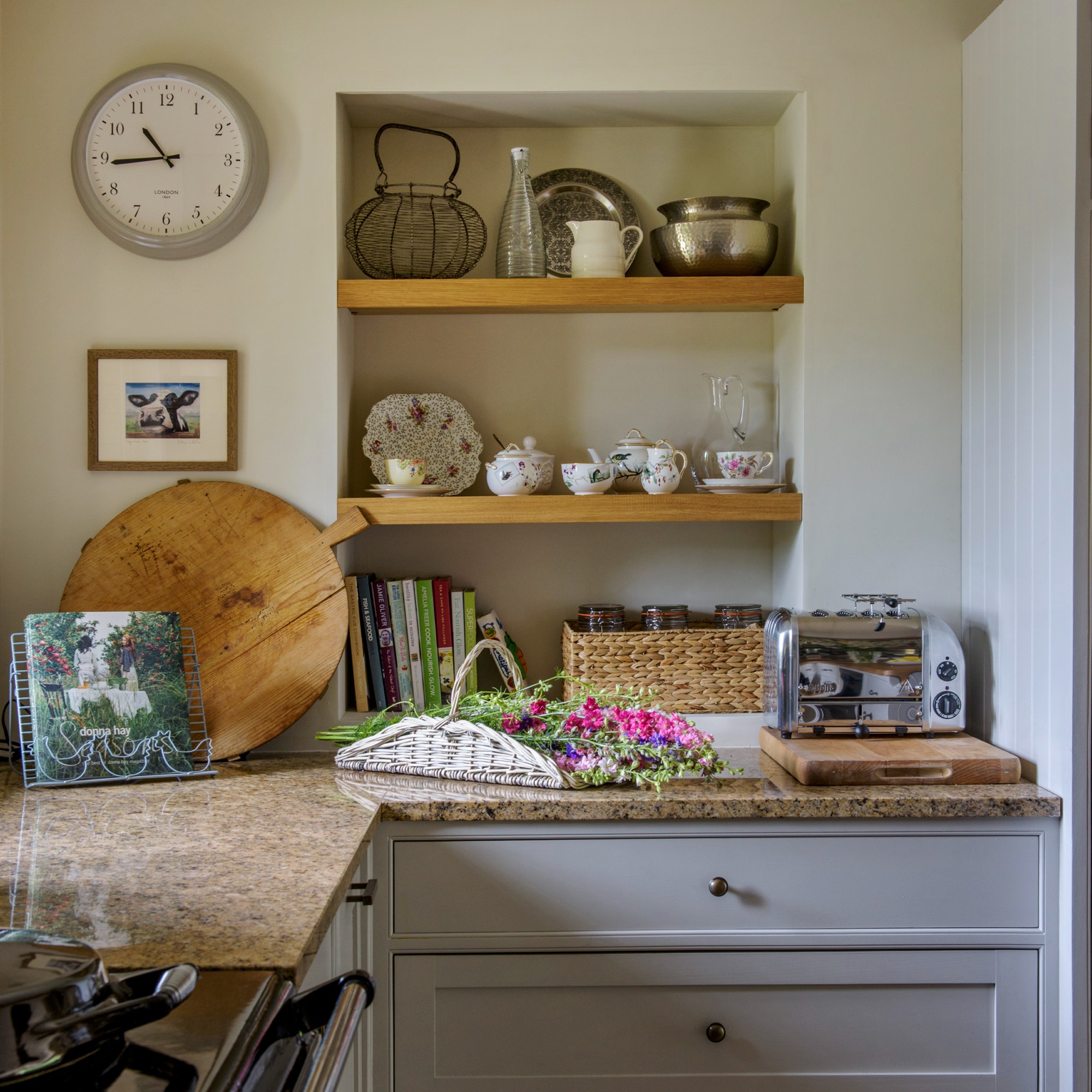
The amount of lemon cleaning hacks is endless. Teaming up with coarse salt and cleaning a wooden cutting board is one of its powers. Indeed, there are very few things that this little citrus fruit can’t do.
‘Due to the variety of uses that they are put to it is perhaps not surprising to learn that cutting boards are some of the most bacteria-ridden items in the kitchen,’ says Sarah Dempsey, cleaning expert at MyJobQuote.co.uk, the UK’s leading trades matching site.
Polya Petrova, kitchen cleaning expert at Fantastic Cleaners, continues, ‘Cleaning wooden cutting boards with lemon and salt once a month should be enough to help maintain them. This method can help remove stains on the board. It also helps freshen up the cutting board if it smells strongly of aromatic spices.’
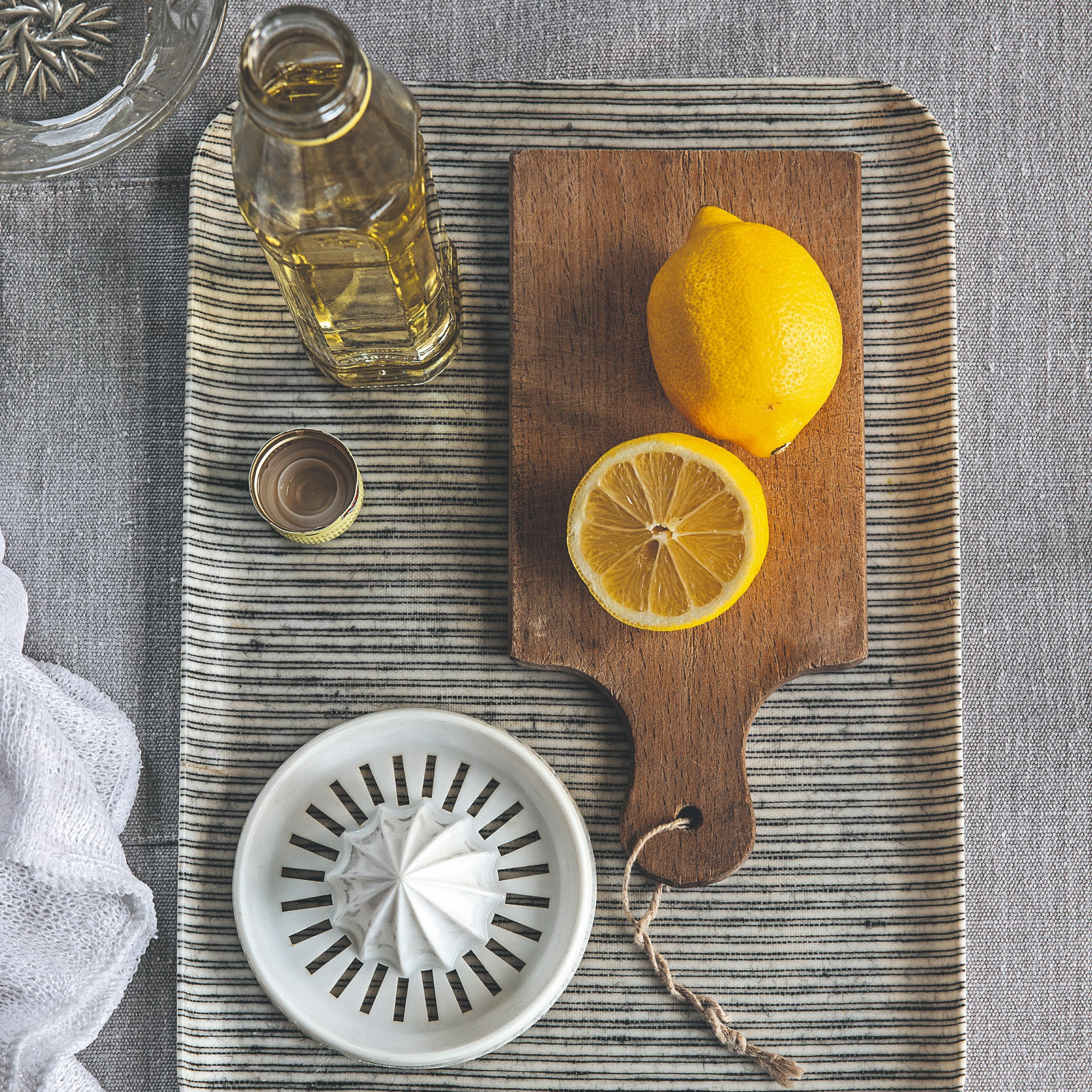
What you’ll need
- Coarse salt
- Lemon
- White vinegar
- Food grade mineral oil like this one from Amazon
Step-by-step refresh guide
Start by rinsing your wooden chopping board with warm water. ‘The first step is rinsing the wooden cutting board under hot running water. Do not soak it as the wood will absorb too much water and when it dries out it can lead to cracks on the surface,’ Sarah advises.
‘You should also never put a wooden cutting board in the dishwasher. This is because the water temperature is too high, it will get too wet and dry too quickly which will cause the board to crack. Harsh dishwasher detergent is also bad for wooden cutting boards.’
Then it’s time for the salt and lemon cleaning hack. ‘Sprinkle the board with coarse salt, like sea salt or kosher salt. Take a lemon cut in half, and rub the lemon cut side down over the salt on the board, scrubbing in small circles, following the direction of the grain,’ Polya explains.
Let the natural cleaning solution sit on the board for 5-15 minutes to disinfect and remove stains from the surface.
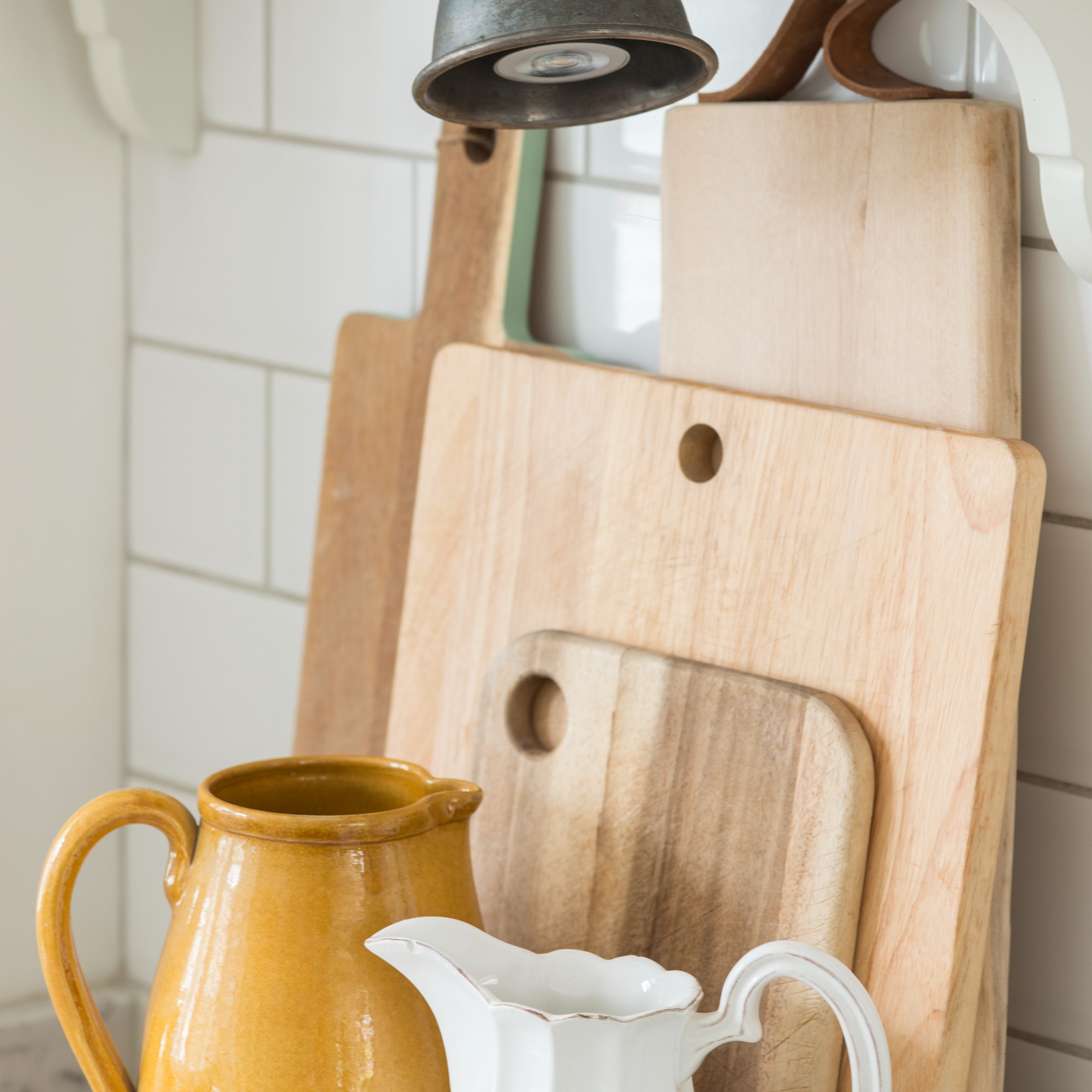
‘White vinegar can also be used as a disinfectant to kill bacteria,’ Sarah adds. ‘Then rinse off with water and dry the cutting board with paper towels. Using tea towels is not advisable as this can cause cross-contamination of foodstuffs.’
Let the board dry completely before applying the food grade mineral oil, which will get rid of any dryness and dullness and bring shine back to the wood. ‘Do not use olive oil or other cooking oils to oil your wooden cutting board as they are not suitable for this purpose and will start to go rancid on the wood,’ Sarah warns.
‘Once the board is dry, an application of food grade oil can be applied with a soft cloth and left overnight to soak in – any excess should be buffed from the surface the next day with a dry soft cloth,’ says Denise Hanson, commercial director at the British Institute of Cleaning Science (BICSc).
This process should be done at least once a month.

Does vinegar clean wooden cutting board?
Due to its antibacterial properties, white vinegar can also be used to disinfect a wooden cutting board.
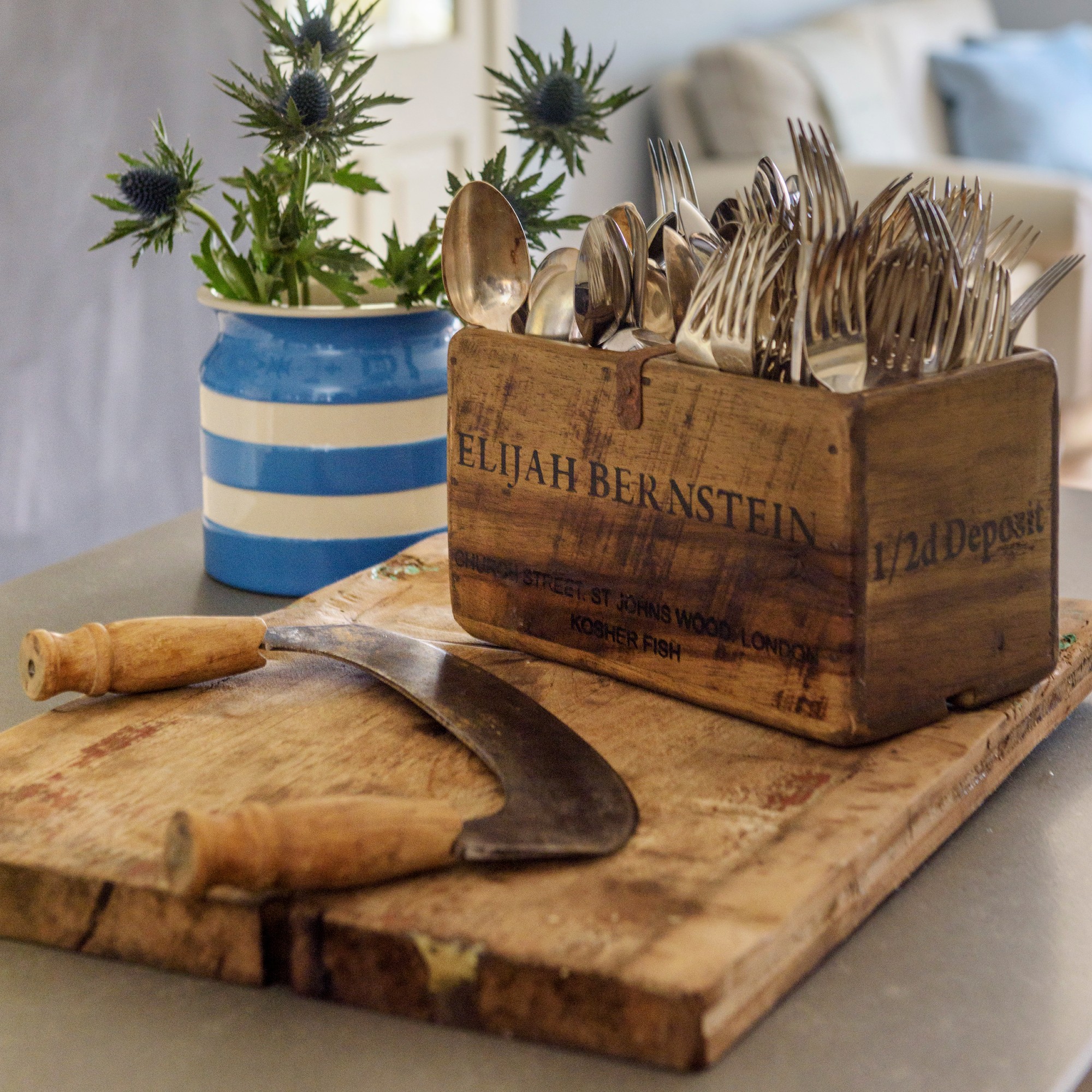
How do you clean raw meat off a wooden cutting board?
‘Coarse sea salt can be used as an abrasive with half a lemon to scrub the surface after preparing fruit and vegetables,’ Denise says. ‘However, if the board is used to chop or prepare raw meat then I would recommend a more commercial product.’
It is also important not to cross-contaminate. ‘If you cut raw meat on a wooden cutting board, you may need to use a gentle detergent and a dish brush to scrub the surface. This is important to avoid cross-contamination between uses. It is advisable to have separate cutting boards for raw meat to prevent this potential issue,’ Sarah explains.
And just like that you will have a wooden cutting board that’s clean and shiny as new.







